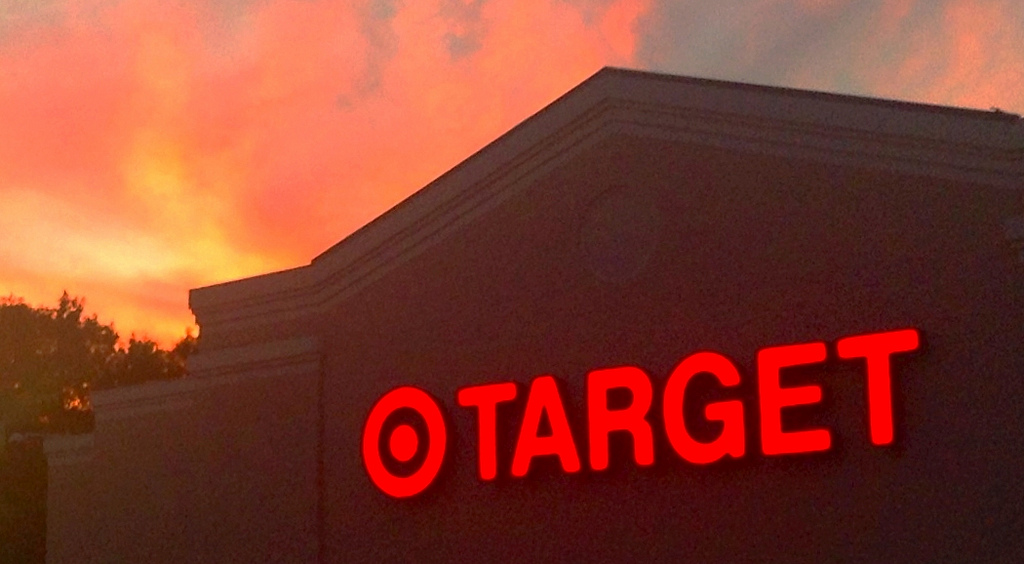Photo: Flickr.com/Mike Mozart
About Target Corporation
Target Corporation employs 361,000 people and operates nearly 1800 retail stores across the United States and Canada. The history of Target Corporation goes back to 1902 when George Dayton purchased Goodfellow’s Dry Goods Corporation in Minneapolis, Minnesota and renamed it The Dayton Dry Goods Company. After merging with another retailer, the now renamed Dayton-Hudson Company in 1962 developed a concept for a mass-market discount retail store: “Target”.
In October 1967, The Dayton Corporation went public and immediately began paying dividends, starting a trend that has continued to this day. At this time, The Dayton Corporation had five divisions: Dayton’s department stores, Target Stores, B. Dalton Bookseller, Dayton Jewelers and Dayton Development Company. In 1969, the company bought Detroit retailer J. L. Hudson and changed its name to the Dayton – Hudson Corporation. In subsequent years, Dayton – Hudson bought the retailers Mervyn’s and Marshall Field’s, and in 2000 formally changed its name to Target Corporation to reflect the company’s primary source of revenue. Target Corporation sold both Mervyn’s and Marshall Field’s in 2004.
The company is a member of the S&P 500 index and trades under the ticker symbol TGT.
Target Corporation’s Dividend and Stock Split History
Target Corporation under its prior name, the Dayton Corporation, has paid dividends since coming public in 1967 and has increased dividends annually since 1972. Target met the Dividend Aristocrat criteria of 25 consecutive years of increasing regular dividend payments in 1996. Target usually declares its annual dividend increase in mid-June, with the stock going ex-dividend in mid-August.
Target has compounded its payout at an average rate of 13.1% over the last 5 years and 16.7% over the last 10 years.
Target has split its stock six times since going public in 1967. 2-for-1 splits have occurred five times: March 1969, November 1981, June 1983, April 1998, and June 2000. Target also split the stock 3-for-1 in June 1996. A single share of stock purchased in 1971 when Target began increasing dividends would now be 48 shares.
Target’s Direct Purchase and Dividend Reinvestment Plans
Target has both direct purchase and dividend reinvestment plans. Investors interested in participating in either of these plans can find information at ComputerShare’s Investment Plan site. The minimum amount that an investor can directly purchase through the plan is $500 for one-time purchases. For direct debit purchases, the minimum drops to $50 provided at least 10 recurring purchases are made.
The plans have both purchase and sales fees. There is a $10 initial setup fee. Stock purchases, either through the direct purchase plan or the dividend reinvestment plan, are 3 cents per share, plus a transaction fee. The transaction fee for the direct purchase plan is either $2 or $5 depending on whether the purchase is by check or direct debit. The transaction fee for the dividend reinvestment plan is 5% of the amount reinvested if the investor owns less than 100 shares. (Target pays the transaction fee for dividend reinvestments from more than 100 shares.)
When selling shares, an investor will pay 12 cents per share sold along with a transaction fee that varies depending on the type of sale (i.e., market order, batch order or day limit order). Investors can minimize fees by buying and selling shares in larger quantities.
Helpful Links
Target Corporation’s Investor Relations Website
Current quote and financial summary for Target Corporation (from finviz.com)
Information on the direct investment and dividend reinvestment plans for TGT

Pingback: Dividend Aristocrats Week in Review for June 14, 2014: Target Announces a 21% Dividend Increase